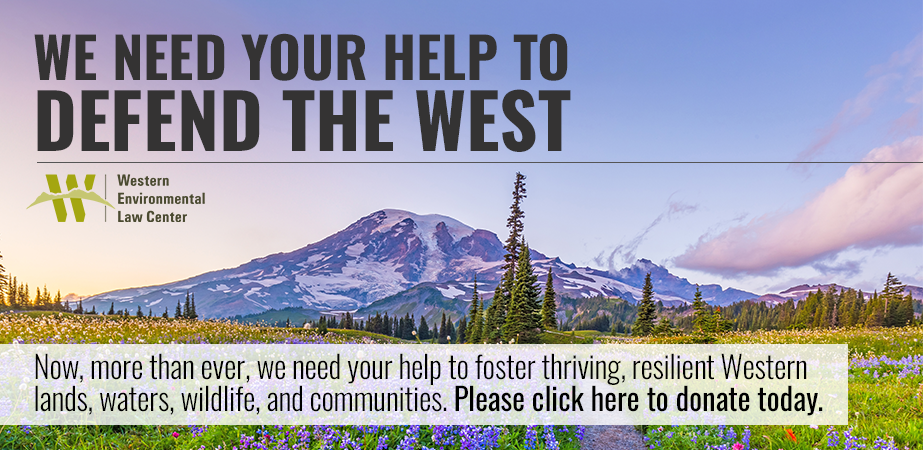Today, the Oregon Senate passed HB 3464, the “Beaver Believer Bill” 19-5 on a bipartisan vote. The bill now heads to Gov. Kotek to be signed into law. The bill allows the Oregon Department of Fish and Wildlife (ODFW) and its Commission to manage beavers on private land as it does with other species. Importantly, it ends the era of unlimited, permitless killing of Oregon’s state animal on private lands.
“We are thrilled that, after many previous attempts to improve beaver management in Oregon with similar legislation, the ‘Beaver Believer Bill’ passed this year with bipartisan support,” said Sristi Kamal, Ph.D., deputy director of the Western Environmental Law Center. “I am so grateful to Rep. Marsh for her tireless work to inform her colleagues about this straightforward way to bring beaver management into the 21st century in Oregon. This bill will promote coexistence with beavers, benefit native fish, improve Oregon’s wildfire and drought resilience, and help mitigate the climate crisis.”
In addition, the bill will allow ODFW to begin collecting data on beavers for more informed management. Previously, the state had no data on its beaver population or distribution on private land, which comprises almost half of Oregon. The bill will allow ODFW and the Oregon Fish and Wildlife Commission to promote non-lethal beaver management tools, set standards on when beavers can be removed, require permits to remove a beaver, create a reporting system on removals, and require landowners to report beaver killings to ODFW so the state can have a better picture of the landscape and make effective decisions to minimize harmful impacts of wildfires.
“If any state should lead on beaver management, it absolutely must be the beaver state,” said Dr. Kamal. “This bill is a huge step toward that goal.”
Contact:
Sristi Kamal, Western Environmental Law Center, 503-519-7049, gro.w1751321316alnre1751321316tsew@1751321316lamak1751321316
Background on benefits of a thriving beaver population (from fact sheet):
Beavers help with climate change
Wetlands and wet meadows created by beavers are natural carbon capture-and-store areas that extract large amounts of carbon from the atmosphere via photosynthesis, a natural process that helps draw down carbon by storing it in roots and decaying matter below ground, in riparian vegetation, and in beaver ponds.
Beaver habitat improves the ability of fish and wildlife to survive climate changes. Their habitats are more stable and less sensitive to short-term climate variability because they contain reservoirs of surface and groundwater that buffer habitats from drought and they create conditions for groundwater recharge to occur during flooding.
Beaver ponds, wetlands and wet meadows hold water in storage and slowly release it, partially offsetting declines in stream flows and water quality related to declining snowpack and spring melt. These natural fire breaks create safety zones for wildlife to survive extreme fire events that are expected to increase with climate change, and can help slow down the spread of fire across a landscape.
Beavers help with wildfires
Beavers create and maintain wetlands, wet meadows, and ponds which are natural fire breaks. The areas provide refuge for livestock and wildlife during fires and habitat post-fire which are critical to helping wildlife survive the winter. Because vegetation remains, these areas trap soil eroding from surrounding hillsides post wildfire and prevent it from reaching streams, helping protect water quality.
Beavers help native fish
Beavers create habitat that improves the function and diversity of the biological and physical systems native fish need to survive and thrive. Ponds provide critical winter rearing habitat for juvenile Coho salmon. Ponds and wetlands temporarily store surface and groundwater which later contribute to cooler stream temperatures. Currently, ODEQ has identified more than 89,000 miles of streams as too warm. Improved riparian conditions result in greater vegetation and insect life, which enhance food sources for native fish.

